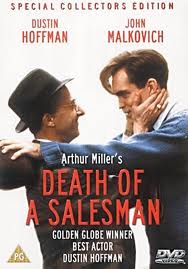
US companies spend 13.7 bn euros ($17.3bn) a year sending business representatives on sales assignments to Europe, yet European companies spend less on penetrating the US market and get far better results.
According to the European statistical agency Eurostat, last year the EU exported 288 bn euros of goods to the USA, but only imported 196 bn euros of goods from the USA. The imbalance was narrower, however, when we look at services. EU exports of services to the USA were worth 161 bn euros, yet imports from the USA amounted to 148 bn euros a year. But the trade gap in both goods and services has been deteriorating every year since 2009.
But these results are in spite of much greater face-to-face activity by US sales executives to achieve sales in the EU. Last year there were 1.3 million visits by US executives to the EU compared to less than 900,000 visits by EU business executives to the USA.
So, if we do the maths on this performance difference we discover that business executives from the European Union are twice as effective as American executives in achieving sales during transatlantic business trips. How so?
The reason is clearly not because US companies send more executives to Europe as part of a sales team, thus multiplying the cost. Most travelers in both directions venture there alone. Neither do executives in the EU back up their visits with greater telephone, email or teleconferencing contacts.
One of the biggest barriers facing US executives is their normally poor command of foreign languages. Perhaps this is the reason why the most popular destination in the EU is the United Kingdom? US business executives are also more likely to combine business trips with holiday and leisure pursuits than EU business travelers going to the USA.
Many US companies clearly realize that face-to-face relationships are not developing in Europe as well as they should. That is perhaps why over 20% of business trips into Europe are for conventions. conferences and trade shows. But even that is not generating the kind of outcome that would produce a return on the 17.3 bn dollars invested in business trips to Europe.
Much of the problem could be overcome by careful planning, the use of commercial agents in Europe to arrange meetings and interpreters when language differences exist. US executives also need to be trained to deal with cultural differences. This is never in doubt when visiting Japan, for instance, but there is a deep-seated assumption that Europe is just like America – but with smaller freeways and only 10% tipping in restaurants. In fact the cultural differences can be huge – even between the USA and United Kingdom.
Another area where business travelers could achieve a substantial return on the costs of their trip is through informal business networking. Existing face-to-face networking events are difficult for the foreign visitor to get involved in. That is why The Federation of International Employers (FedEE) has developed a new business travel networking community – or butN for short. butN goes beyond LinkedIn by having as its objective the organization of informal face-to-face meetings rather than just establishing connectivity via the Internet.
butN (http://www.butn.co) is being launched this week in Europe after a successful beta launch in Australia last week. It is free, safe and easy to use and FedEE calculates that if only three or four new business contacts are made during a typical 12-day stay in Europe by a US business visitor the trip would be justified – whatever the outcome of meetings that have been planned in advance.